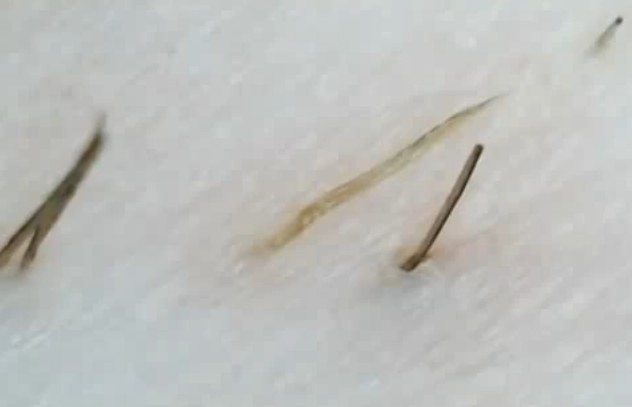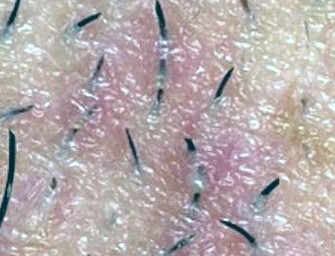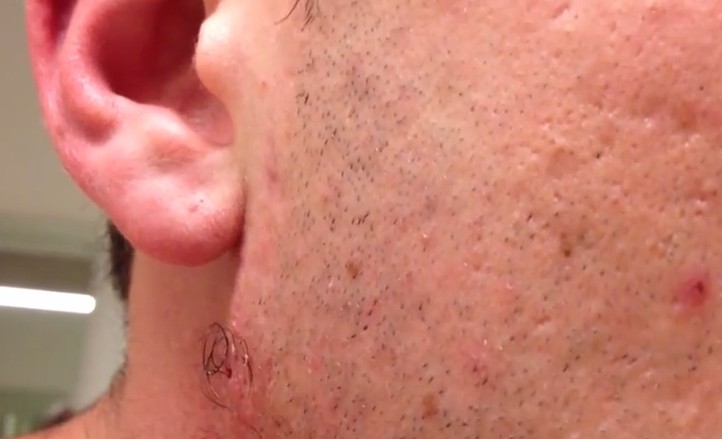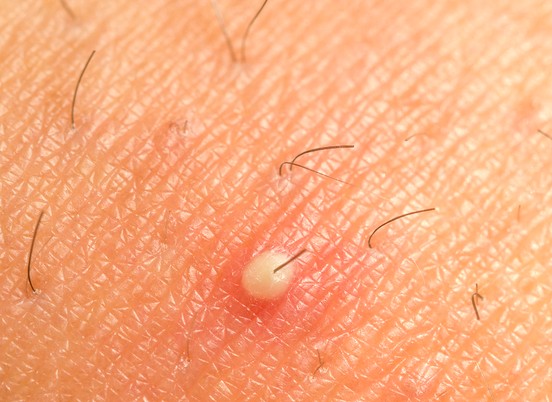Ingrown hair refers to hairs that bend and insert into the skin, when growing back after a shave or tweezing. It mostly occurs in 14 to 25 year old African-American males. It can also affect women who eliminate unwanted hair via tweezing, electrolysis, waxing, or shaving as well as people of all age groups.
Ingrown hair can result in itchiness, irritation, and inflammation of the affected area.It may also trigger the development of reddish bumps and cause localized pain. These bumps are often unsightly, thereby leading to lowered self-esteem, embarrassment and shame.
It is not possible to completely avoid shaving. Thus, use of hair removal methods which pose the minimal threat to ingrown hair is the best preventive measure.
Symptoms of ingrown hair
Ingrown hair generally occurs in the men in the facial beard area, the chin, and cheeks. Cases of ingrown hair are also widespread in the neck region. Shaving of the scalp can cause the formation of ingrown hair on the head. Women tend to get ingrown hair in the armpits, the lower limbs, and the pubic area.
A few prevalent signs and symptoms that occur along with ingrown hair are mentioned below:
- Rooted or entrenched hair may be evident.
- The affected area may experience the growth of small, pus-filled, blisters-like pustules or lesions.
- Some people may develop small, rounded, and solid papules or bumps on the affected skin.
- Mild to severe itching of the affected area.
- Redness and local pain.
- Darkening or pigmentation of the affected skin.
Chronic or long-term instances of ingrown hair can cause the following health complications:
- Affected people may inadvertently and repetitively scratch the affected skin so as to alleviate the itchiness. This can make the skin fragile and cause it to break open into wounds, which are then at greater risk to secondary infection by bacteria or other pathogens.
- As compared to the adjacent regions, the affected area may elicit a darker skin tone.
- Ingrown hair may eventually result in permanent scars.
Causes of ingrown hair
- The direction of hair growth as well as its basic structure are the primary factors responsible for development of an ingrown hair. For example, hair that is tightly wound is more likely to elicit a curved hair follicle; this in turn can induce the hair to re-enter into the skin, when the hair starts growing back after being cut.
- Curved hair follicles feature sharp edges after a shave, more so if the hair is dry when shaving. When such hair starts to grow back, it bends backwards and re-enters the skin. This manner of ingrown hair development is known as “extrafollicular penetration.”
- “Transfollicular penetration” occurs when the skin is pulled taut during a shave. Shaving on skin that is pulled tightly prevents the hair from growing normally; it is more likely to bend backwards into the skin and enter it, without growing out at all.
- The use of double-blade razor is another common cause of ‘transfollicular penetration.’ In a double-blade razor, the first one tugs at the hair, while the second razor cuts its. This is what causes the hair to retract into the skin.
- Tweezing can also cause ‘transfollicular penetration.’ Tweezing causes a part of the hair to stay put within the skin surface, thereby increasing the risk to an ingrown hair.
- Inflammation and redness of the skin, with ingrown hair, is a reaction of the immune system, which identifies the retracted hair as an attacker and rushes to protect the area.
- People with tightly curled hair are more likely to suffer from ingrown hair than others. African Americans and Hispanics typically feature such hair, and hence are more susceptible to ingrown hair development.
How to get rid of an ingrown hair?
- Ingrown hair is not a condition that causes significant damage to the health. However, patients with prolonged instances of ingrown hair need to visit a doctor to get rid of it.
- One may completely stop waxing, shaving, or tweezing, etc., to get rid of ingrown hair and prevent its growth. Else, patients may get it removed via laser surgery.Laser hair removal techniques remove ingrown hair occurring deep inside the skin. It is also more effective in preventing its development in the future.
- Hirsutism is a disease characterized by excessive hair growth, all over the body, including ingrown hair. Visit a doctor for diagnosis of hirsutism and relevant treatment.
- Doctors may also prescribe medicines like exfoliant creams to remove dead skin cells; retinoids to decrease skin pigmentation and hardening; corticosteroid creams for easing inflammation; and antibiotics for treating secondary bacterial infections.
The below listed self-care guidelines and preventive measures can help get rid of an ingrown hair.
- Before a shave, use a washcloth or a soft-bristled toothbrush to wash the skin with ingrown hair. Wash in a circular motion, wait for some time, and then start shaving. You may also wash the affected areas in a similar manner before going to bed.
- Ingrown hair can also be released via a bread pick, straight pin, tweezers, or a sterilized needle. Be careful when removing the ingrown hair; excessive picking or digging can result in skin damage and secondary infections.
- Soften the skin by tapping it with a towel soaked in warm or plain water; apply soap or foam, and then begin shaving. Do not apply foam or soap on dry skin.
- Shave daily, in the direction of hair growth. Hair grows downwards on the cheeks, chin, and below the jaw, and in the opposite direction along the low end of the neck below Adam’s apple.Do not apply excessive pressure on the skin when shaving.
- Double or triple blade razors provide a close shave. But they are bad for ingrown hair. Avoid them. Shave with the traditional safety razor or single-blade disposable razors. Go for a new razor every time. Also, avoid electric razors as they can sometimes cause haphazard regrowth of hair, in different directions, thereby increasing the risk to development of ingrown hair.
- Patients suffering from bumps in the affected skin areas should not shave till they are eliminated completely. Wash such areas, on a daily basis, with an antibacterial soap.
- Stiff high collars can rub against the neck and aggravate an underlying case of ingrown hair in the neck. So avoid wearing shirts with such collars.
Ingrown Hair pictures



